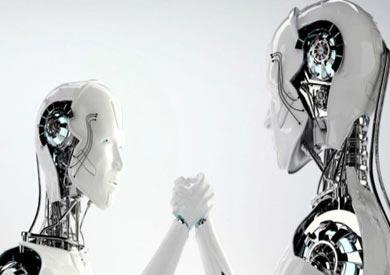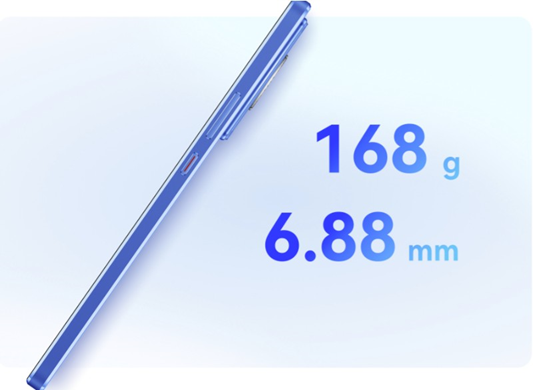How is it easier than ever to create "fighting" robots?
The biggest development in the field of “combat” robotics is how much easier it is now to get into the field than it used to be.
A visit to the robotics area behind the "fighting ring" of Robot Wars, a program that hosts arena battles between robots on the BBC, reawakened a long-buried ambition in me. Childhood.
When I was eight years old, I searched tirelessly for everything needed to create the perfect robot, from truck wiper motors and lawn mower parts to heavy-duty battery packs.
But it soon became clear to me that my challenge would be to get the hardware needed to run the bot. At the time, even slightly modifying the Scalextric mini-cars that children played with was a long way off without the guidance of an expert.
Now, I stand with inventors tweaking and repairing robots on their workbench, in preparation for the return of these battle-hungry robots to UK TV screens for the first time, after a hiatus of nearly a decade.
Skip topics that may interest you and continue reading. Topics that may interest youtopics that may interest you. End
In the decade since the show has been off the air, advances in robot design and manufacturing have propelled the industry forward. And when I had a chance to watch these new devices concede to one another, I wanted to see how much robots had changed, and whether it was easier and easier for the young inventor to build them than it had been before.
Then I headed to the giant warehouse on the outskirts of Glasgow, where the new set of "Robot Wars" episodes is being filmed.
The battle bot prep area is bustling with activity. Competitors only have a few minutes between battles to repair their bots, and in those few minutes they work quickly and efficiently to repair damage to their bots and make adjustments to each bot in preparation for the next opponent.
Most of the bots in these competitions at the moment are made of separate modules in some way, and this allows to change the weapon or armor to match the upcoming opponent.
Skip the podcast and read onMorahakatyTeenage taboos, hosted by Karima Kawah and edited by Mais Baqi.
The episodes
The end of the podcast
Because of the lack of time, the competitors offer advice and help to each other. And while they may be sworn enemies in the actual fighting arena of the show, here they get along in the preparation space together.
It's easy to forget how much technology has changed over the 15 years that the program has been discontinued.
"Robot Wars was off TV five years before Apple released the iPhone, and before Apple released the iPhone," says Ed Hobbett of Team Storm, a contestant on the show who works every day for VMware. Four years before the BBC launched iPlayer, twelve months before Facebook entered our lives.”
He continued, “We have witnessed tremendous changes since then, and because of these changes, robot manufacturing has become more feasible than ever before. Learning and access to knowledge have become easier and faster than before, thanks to modern means that encourage cooperation between people.” Like our phones that enable us to get answers and share experiences from anywhere in the world."
"The Storm team makes sure we place an iPad in the workshop so that we can search online for information about a component or fix a problem on the spot," he added.
"Access to these resources reduces the time required to learn and reduces the chances that the effort to fight for the first time in the 'Robot Wars' arena will end in disaster," Hobbett continued.
Some believe that the experience of fighting for the first time in "Robot Wars" may be nothing more than a very short match that causes embarrassment to the competitor. I saw more than one battle, each of which did not exceed 30 seconds, before one of the two robots collapsed in the arena.
But at least in this case, the competitors can get the whole robot back in one piece, since the less fortunate might have to dispose of the remnants of their device if that device is badly damaged.
But not only popular combat robots have benefited from advances in affordable manufacturing, but performance-modified wireless cars have reportedly benefited as well.

And I wanted to see for myself how easy it would be to make something programmable, smart, that could obey my commands.
That's why I visited Tim Freebairn, who runs Bayburg in the UK.
You wouldn't expect his office near Huntingdon, Cambridgeshire, to be a robotics company that ships its products around the world.
The company has benefited from the support of Kickstarter, a crowdfunding platform for startups, whose participants from around the world have contributed to the launch of two Bayborg projects.
Bayborg's robots are run on a Raspberry Pi computer, which is a single-board computer, the latest version of which is the size of a credit card.
This is why Bayborg robots are fully programmable, autonomous, cheap, and compact.
"Raspberry Pi computers are great because they give you all the power of a computer in a really small and light device. All you need to run it is a monitor, keyboard and mouse, which everyone has somewhere," says Freeburn.
Frybairn showed me his smallest robot, the Yetiburg robot, a skateboard-sized robot with thick wheels that can be programmed to race by tracking the visible traces left by competitors on the racetrack in front of it. Humans need to enter no information other than writing the rules of the race, to control the robot's behavior during the race.
And this robot doesn't have much, it contains a Raspberry Pi Zero, which is the smallest main board, which sells for four pounds each, a motor controller, an image sensor, four motors and a set of batteries attached to the metal plate that forms the frame robot.
But this robot is completely autonomous, and may learn how to decide to overtake its opponent, where to turn, and even how to flip itself into the right position if it gets into trouble.
"What sets Raspberry Pi apart is that it makes its users feel like a community," says Freebairn. "We help each other and share tips, in an environment that's far less competitive than alternative communication environments."
Perhaps one of the reasons is how easy and inexpensive it is to start assembling this device, and people seem more willing to put their ideas on a Raspberry Pi computer.
The most prominent of Bayprog's robots is the Doodleberg, which is a gigantic device with six wheels compared to other robots. The Dudelberg robot is similar to a bomb disposal robot, but without an arm.
The purpose of this eye-catching robot demonstration, Tim explains, is to prove that even a powerful robot, powered by six massive motors, can be controlled by a Raspberry Pi computer.
"The challenge is for people to realize the capabilities of the Raspberry Pi computer. We have tried to explore how big a robot that can run on a Raspberry Pi computer can be. And the Dudelberg robot is strong enough to carry an adult human on top of it." .
This robot may also be used in practical applications, but that depends on the ability of its users to demonstrate the multitasking that they can perform with this robot by starting to manufacture it.”
"One of the most important changes in the past few years is that it's so easy to find tutorials on YouTube and blogs, as well as experts who can offer advice online and in forums. This information wasn't available to you 10 to 20 years ago."
I can see signs of this in the "Robot Wars" arena. Many of the parts needed to build a fighting robot are available at specialized online stores, which means competitors often use the same battery packs, motors and controls.
Teams of entrepreneurs that have come up with a solution to a problem or challenge are now marketing those solutions to robot manufacturers, which means access to off-the-shelf parts is easier than ever,” Hobbett says.
"It takes a lot of money to make high-quality products that are expensive compared to other products, people spend thousands of pounds," Hobbett continued, "but for hobbyists who are obsessed with building robots, it is still easier than ever to get started."
Adds Hobbit: “One of the values of Robot Wars that has attracted Team Storm is that it continues to aim to inspire a new generation. You see it on some other popular shows, especially in the US."
And the last piece of advice Hobbit gives to upcoming robot manufacturers is not to give up hope. “The only way to learn about building a robot is when something breaks down in front of you,” Hobbett says. “It's not hard to build a robot, but it's hard to keep it running until the event is over.”
He continued: "When something breaks down, you will search and try to understand why it broke down, and make it stronger than before. Robots never stop changing and evolving. Even the Storm 2 robot, whose shape has not changed from what it was in the last episodes of the program." Robot Wars has evolved without anyone noticing.
I despaired when I was eight years old, because there was a very high barrier separating me from this field. But not for the new generation of robot makers who are not afraid of challenges and have an adventurous spirit.
As long as the resources are available, and the technology is available, all that is required is a little imagination.










